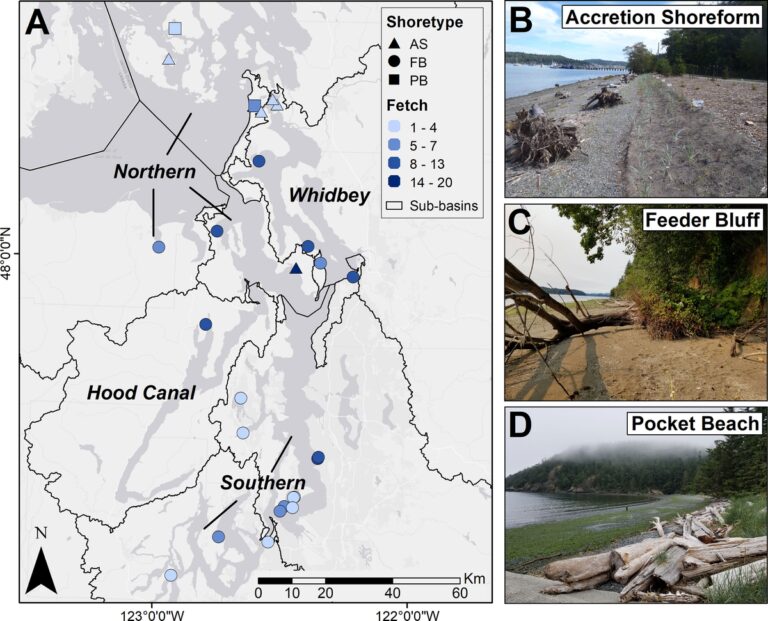The article discusses the role of geophysical features in determining shoreline habitat function and restoration effectiveness, particularly in the context of the increased human modifications to coastal areas, such as armor placement. The study focuses on the Salish Sea, where various coastal landforms—feeder bluffs, accretion shoreforms, and pocket beaches—impact restoration outcomes for threatened species like juvenile fishes and invertebrates.
The study evaluates restoration efforts by comparing 26 restored beaches to natural beaches, assessing indicators like beach wrack cover, log counts, sediment composition, vegetation, and insect density across different shoretypes. Key findings indicate that natural beaches generally exhibited more overhanging vegetation and higher insect diversity than restored ones, suggesting longer recovery times for restored sites. Importantly, geophysical parameters such as shoretype and fetch (wave-generating distance) significantly influenced restoration results, while the amount of armor in surrounding drift cells did not show a significant effect.
The results reinforce the idea that effective coastal management and restoration planning should account for the diverse geophysical landscape features, as they mediate ecological responses and restoration success. Overall, while shoreline restoration can achieve close-to-natural conditions, variability exists, highlighting the need for continued monitoring and possibly more time for ecosystems to mature after interventions. The article emphasizes a landscape-contextual approach to restoration, integrating geophysical features for more effective coastal management.
Source link


